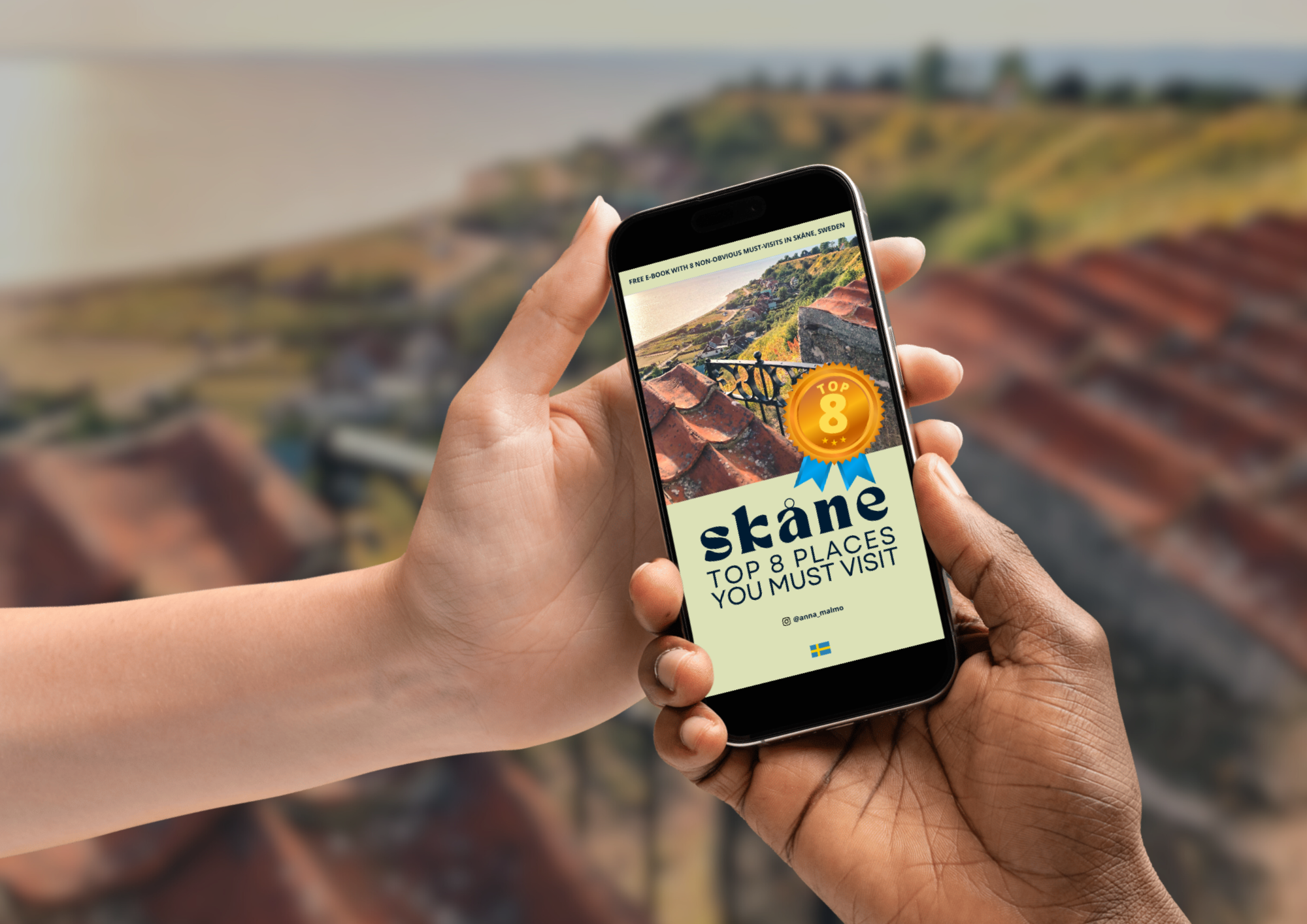
To Buy or to Rent: The Real Estate Market in Sweden
Share
"You're joking." - that's the usual comment from my family and friends when I tell them about the Swedish real estate market. When searching for an apartment in many countries, you probably browse numerous ads on various portals, arrange viewings at convenient times, and then negotiate the price with the seller or landlord. Searching for your own place in Sweden requires a completely different approach - whether it's buying or renting property.
Contents
- Introduction
- Renting a Property
- Renting from a Cooperative
- Where to Start
- Renting from a Private Owner
- Buying a Property
- Bostadsrätt (Cooperative Ownership)
- Äganderätt (Full Ownership)
- Where to Start
- Mortgage for Buying Residential Property
- Moving Etiquette
- Conclusion
Introduction
Here in Sweden, due to the long-standing housing crisis, owners, landlords, cooperatives, and developers have the upper hand, as there are simply too few apartments in Sweden. Today, I present the options for securing a place to live in this Scandinavian country.
Renting a Property
Renting is the most popular way to acquire a place in Sweden. It is extremely lucrative for... the landlords, but not necessarily - tenants often become landlords themselves.
Renting from a Cooperative
Hyresrätt, or "right to rent," is a very Swedish thing! If you rent a residential unit, it's best to rent from a cooperative that adheres to Swedish law. This solution guarantees the stability of the contract and regulated rent increases (controlled by the state). Unfortunately, this type of rental is nearly impossible for newcomers. Why?
Imagine standing in lines for rental apartments and, on top of that, collecting points for it! The longer you wait, the more points you accumulate; it's almost a national sport. Unfortunately, the queue system has long become outdated and simply ceased to be effective. This is due to the disproportionate growth of Sweden's population to its housing capacity.
For example, in Malmö, several cooperatives have merged into a "queue consortium," with a single queue, and "standing" in it costs 350 crowns per year. Currently, hundreds of thousands of people are waiting in this queue, and the waiting time is years. The good news is that there are also cooperatives where queues do not apply, but in such cases, you need to be prepared for a very rigorous selection process. Usually, the criteria in cooperatives include: no debts or financial problems in history, no criminal record, no frequent changes of residence in history, and a salary exceeding at least three times the rent amount. As you can see, to rent an apartment this way, you need to have a history in Sweden, making it an unattainable option for newcomers.
Where to Start?
First, find out which cooperatives allow rentals without waiting in line. You can ask friends in the area or simply search for local housing cooperatives (bostadsförening, fastighetsbolag) and call them, eloquently expressing sincere interest in their offer and its terms.
When you potentially meet all the above conditions and feel confident enough to compete for an apartment, remember one basic rule - don't be anonymous. Write, call, ask, seek contact, and make yourself known. With a bit of luck, you’ll be invited to a visning, or collective apartment viewing.
The visning date is set in advance by the mäklare (the agent) who handles the property. The rules are simple - about five candidates, previously selected according to the aforementioned criteria with a touch of the employee’s personal intuition, meet at the door, take off their shoes, and make an "invasion" on the current tenants' home. Of course, you can’t look into every corner because it's impolite, and besides, who cares - at a visning, everyone is genuinely interested, as it might be their first and only visning in their life. It lasts no more than half an hour. The apartment caretaker, during small talks with the candidates, makes a mysterious selection, but you’ll have to wait a few days for the verdict - it’s a few days to worry whether that comment about the crack in the wall was necessary or if smile number five was interpreted as flirting with the real estate agent.
The lucky ones who "got" the apartment sign a contract with the cooperative - it can be signed individually or with a roommate, depending on the situation. The rent amount (hyra) depends on almost everything: the number of rooms, location, and even the building's age. The rent usually includes heating, water, waste disposal, and repair of all appliances and furniture that are part of the apartment. Of course, you need to pay a deposit, but its amount is regulated by law. The rental agreement is usually indefinite and states that the tenant cannot be evicted under any circumstances unless they grossly violate the contract terms or social norms.
It’s worth mentioning that Swedish rental apartments are standardized and almost all look more or less the same. They also have similar equipment: wardrobes, an IKEA kitchen with a fridge, microwave, and stove, a clothes hanger by the door. Bathrooms have white tiles on the walls, dark ones on the floor, although older apartments might have linoleum. In new rental buildings, bathtubs are no longer used - bathrooms have showers with floor drains. The rest of the apartment features wooden floors or panels, white walls, and simple white doors.
You can’t skip mentioning the issue of laundry - according to standards, cooperatives are obliged to provide tenants with access to a washing machine and dryer. While in new buildings you will often find a washer-dryer in the bathroom, in the vast majority of Swedish apartment blocks there are communal laundry rooms where you need to book your laundry time in advance.
Renting from a Private Owner
This means renting an apartment from its owner, but not necessarily, because in Sweden second or even third hand renting is quite common. This solution should be achievable for newly arrived people, but it is quite risky, especially in large cities. Such a rental agreement is very unstable, so you face unregulated rent increases, horrendous deposits, or termination of the contract at any time - this problem particularly affects the capital, and record holders move even a dozen times a year! Fortunately, Swedish law prohibits evicting anyone "onto the street" - theoretically, the landlord must wait until the tenant finds a replacement apartment. Private agreements are also not subject to any special restrictions - the apartment does not need to have standard equipment or a specific condition. Also, remember that the owner often has to present the tenant's candidacy for consideration by neighbors, and sometimes we can encounter strange restrictions in the contract, such as a ban on having overnight guests.
How to find an apartment from a private owner? Completely opposite to other countries - let the owner find you! It sounds weird, but due to market realities, in Sweden, it's not the rental property owners who need to advertise, but the rental candidates. Most ads from both sides can be found on blocket.se and on Facebook.
Average rental prices per month for a 3-room apartment in different cities and regions:
- Stockholm: 8,655 SEK
- Gothenburg: 7,619 SEK
- Malmö: 8,756 SEK
- Average in larger municipalities: 7,820 SEK
- Average in smaller municipalities: 6,930 SEK
- Average in all of Sweden: 7,753 SEK
Source: Statistikmyndigheten
Buying a Property
Buying property in Sweden is a really good idea - historically, it has always appreciated in value, and people who managed to buy a house or apartment 10-15 years ago earned several, or even several dozen times more than they paid. Affordable loans with low interest rates, handed out like hotcakes, definitely boost the market and encourage property purchases... of which there aren’t many.
Bostadsrätt (Cooperative Ownership)
Bostadsrätt is akin to cooperative ownership. It can cover both an apartment in a block and a house - most often these are the extremely popular terraced houses (radhus) in Sweden. In the case of such a house, you own the interior along with the right to use the land attached to the house, while the facade (exterior, doors, windows, roof, chimney, etc.) is usually the responsibility of the cooperative. This comfort also requires paying a rent (or rather a fixed monthly fee - avgift), but it is much lower than in hyresrätt. You also need to pay all utility bills and other operational costs (driftkostnad). Owning a bostadsrätt gives you a real influence on the cooperative's operations, you can participate in making key decisions, and even be a board member of the housing cooperative.
However, remember, this is Sweden, so you can't just buy any apartment you want, even if you have the money - in many places, especially established "neighborhood communes," your candidacy to buy an apartment, even if accepted by the current owner, must be approved by potential neighbors.
So, be prepared for an involuntary casting, where deciding factors for acceptance can include things like the candidate's education, type of job, family status, lifestyle, or... manners.
Average prices per square meter:
- Stockholm: 65 633 SEK
- Gothenburg: 45 771 SEK
- Malmö: 33 977 SEK
- Average in all of Sweden: 44 263 SEK
Source: Mäklarstatistik
Äganderätt (Full Ownership)
Äganderätt is unlimited ownership - in the case of owning property, you own the entire building and the land (plot) it stands on. The owner is responsible for utilities and all operational costs (driftkostnad) and repairs. There is no rent or any other fixed fees resulting from the ownership, and there’s no assessment when buying a freehold property.
Average prices per square meter:
- Stockholm: 53 032 SEK
- Gothenburg: 42 518 SEK
- Malmö: 36 193 SEK
- Average in all of Sweden: 30 263 SEK
Source: Mäklarstatistik
Where to Start?
Real estate sales in Sweden are handled by developers (in this case, the rules are very similar to those in many countries, so I won't delve into it) and real estate agencies (mäklarhus) through their agents (fastighetsmäklare). Sometimes private individuals also sell their homes and apartments without intermediaries, but real estate agency mediation is extremely popular here. Fastighetsmäklare are very well educated, and their services are comprehensive - they handle: property valuation, financial advice on sales, home-staging, photo sessions, creating offers and promotional materials (e.g., brochures for potential buyers), organizing viewings, contacting interested parties, coordinating auctions, mortgage brokerage, and finally preparing the sales contract.
When buying property through a real estate agency, you cannot expect direct contact with the owner until the day of signing the preliminary contract - it is even forbidden. After finding an interesting offer, you need to contact the agent assigned to the property and sign up for a visning (viewing) - often you can do this through the agency’s website.
Like in the case of cooperative rentals, viewing dates are set in advance. On the sidewalk, in front of the entrance to the house/apartment to be viewed, there is usually a low sign with the real estate agency's logo. You can come to the viewing during its duration, usually about an hour. On site, the agent in charge of the apartment answers all questions. Sometimes the apartment is already empty, and sometimes someone still lives there - it is always subjected to minor or comprehensive home-staging, and the owners are never around.
Here, however, the rules end, and the ruthless battle begins. Because the viewing may not even take place - even before the viewing, you can propose an exorbitant price for the property to the agent, and if it meets the owners' approval, the apartment gains the status borttagen innan visning / såld före visning (sold before viewing). If the viewing takes place, then right after it, the bidding begins, which has absolutely no rules - anyone who provides their personal details can bid, and the offers are not binding on either the bidders or the owners. If the bids in the auction do not satisfy the owners, further viewings are organized. The final sale price is usually several percent higher than the initial price.
Mortgage for Buying Residential Property
Sweden is a true eldorado when it comes to loans - with the widespread access to personal data, including earnings and financial situation of every resident, banks can afford to thoroughly check the creditworthiness of a candidate. Unfortunately, this also means that newcomers in Sweden are unlikely to get a loan due to lack of history and financial reliability.
Credit checking (kreditupplysning) is done automatically after submitting a loan application, and the person being checked is only notified of this fact. Everything is done online and by phone. After successfully passing the credit check and possible phone interviews with the bank, you get a loan promise (lånelöfte). This document is the ticket to being a serious candidate for buying an apartment - sometimes real estate agents ask to see it at the first viewing.
It’s worth knowing that if you want to take a loan to buy an apartment or house, you need to take it out for a specific property at a specific price. On the websites of Swedish banks, there are calculators that, after entering personal data and property details, indicate the chances of getting a loan and its potential cost.
The interest rate on housing loans in Sweden starts at 2%, but I know people who have negotiated even better offers. The loan can also be divided into parts and the interest rate can be blocked for a specified period. However, it's worth mentioning that creditworthiness is calculated by algorithms according to the ability to withstand interest rates up to 8%. You also need to have a down payment - usually 15% of the loan amount. A housing loan can be taken individually, as a married couple, as a couple, I also know cases where brothers-in-law or grandfather and grandson took a loan together. Of course, this significantly affects creditworthiness, so be especially careful who you take the loan with. Borrowers are equally burdened with the loan, there is no option of surety. In a standard case, four parties are involved in signing the property sales contract: the seller, the buyer, the real estate agency representative, and the bank representative granting the loan. A notary's participation is not necessary, as it is in many countries. First, a preliminary contract is signed and a deposit is paid, which counts towards the down payment. After signing the final contract, the keys to the apartment are handed over.
Moving Etiquette
Moving etiquette in Sweden is also a topic worth discussing. Moving companies run a lucrative business, especially those offering comprehensive services including cleaning. Why? Especially in the case of renting an apartment from a cooperative, the previous tenant is obliged to leave the apartment in the same condition they found it - thorough cleaning (flyttstädning - standardized moving cleaning), patching any holes in the walls, and painting is their responsibility. If the new tenant or cooperative is not satisfied with the apartment's condition after moving out, the old tenant will be charged cleaning costs exceeding the deposit.
Similarly, the seller of their former apartment should be diligent - all deficiencies and damages must be exhaustively indicated in writing before signing the sales contract, and the apartment’s equipment should be meticulously documented. The absence of certain appliances or furniture entitles the new owner to demand payment, and their excess can entitle them to demand reimbursement for disposal or storage costs.














